From Vesuvius to Moscow – without leaving Switzerland
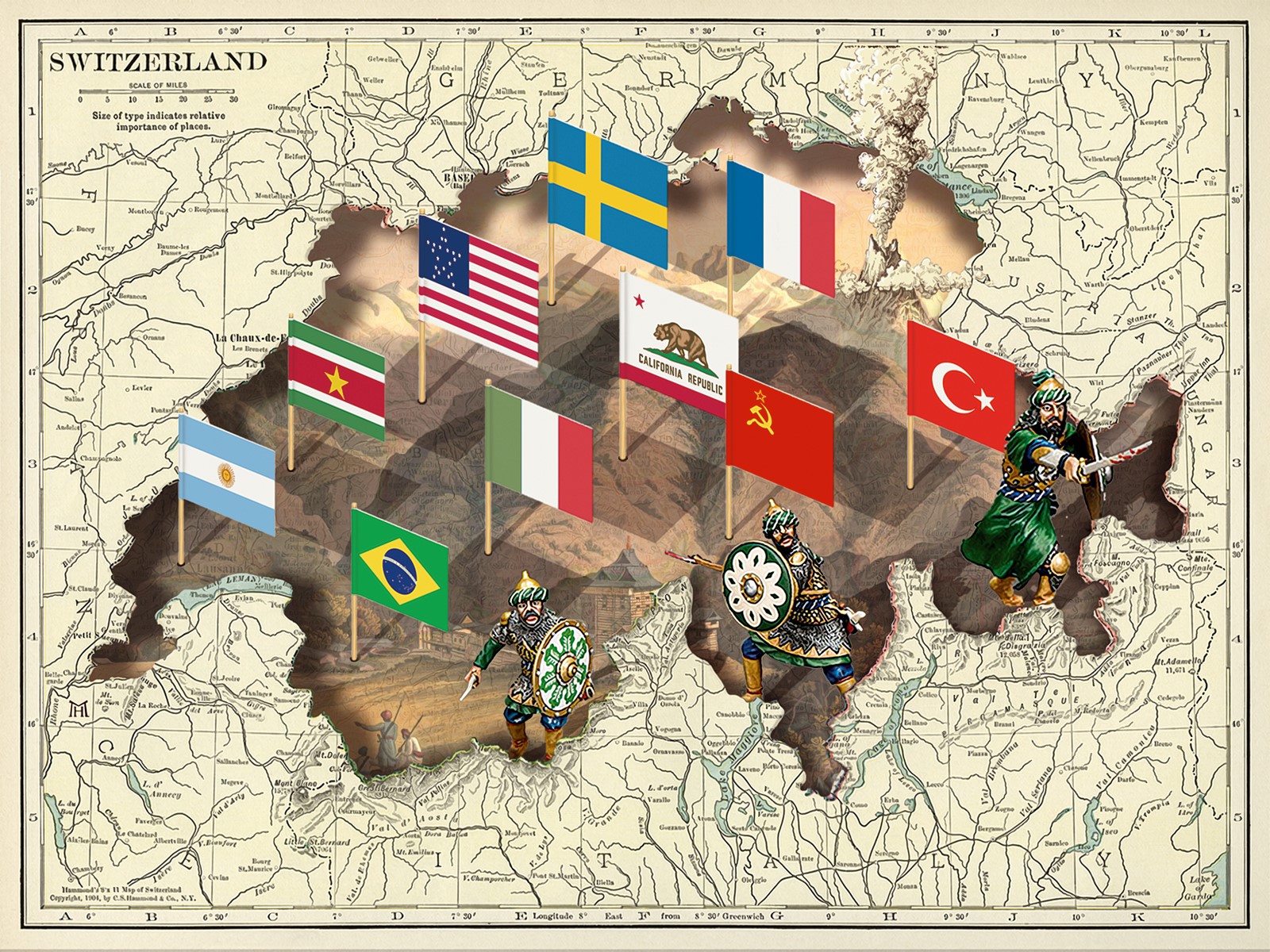
Sibirie, Afrika, Le Brésil, Himalaia – as toponyms go, none of these place names sounds particularly Swiss. And yet they are all to be found right here in Switzerland, where an estimated several hundred such ‘exotic’ names have been borrowed from elsewhere.
Most of these ‘exotic’ geographic and place names were coined in the last two to three centuries – and for very different reasons.
SWI swissinfo.ch regularly publishes articles from the Swiss National Museum’s blogExternal link dedicated to historical topics. The articles are always written in German and usually also in French and English.
The logic behind the naming of Vesuv in Heiligenschwendi in the canton of Bern is obvious: the hill’s roughly conical form is similar to that of Vesuvius, the celebrated volcano in southern Italy.
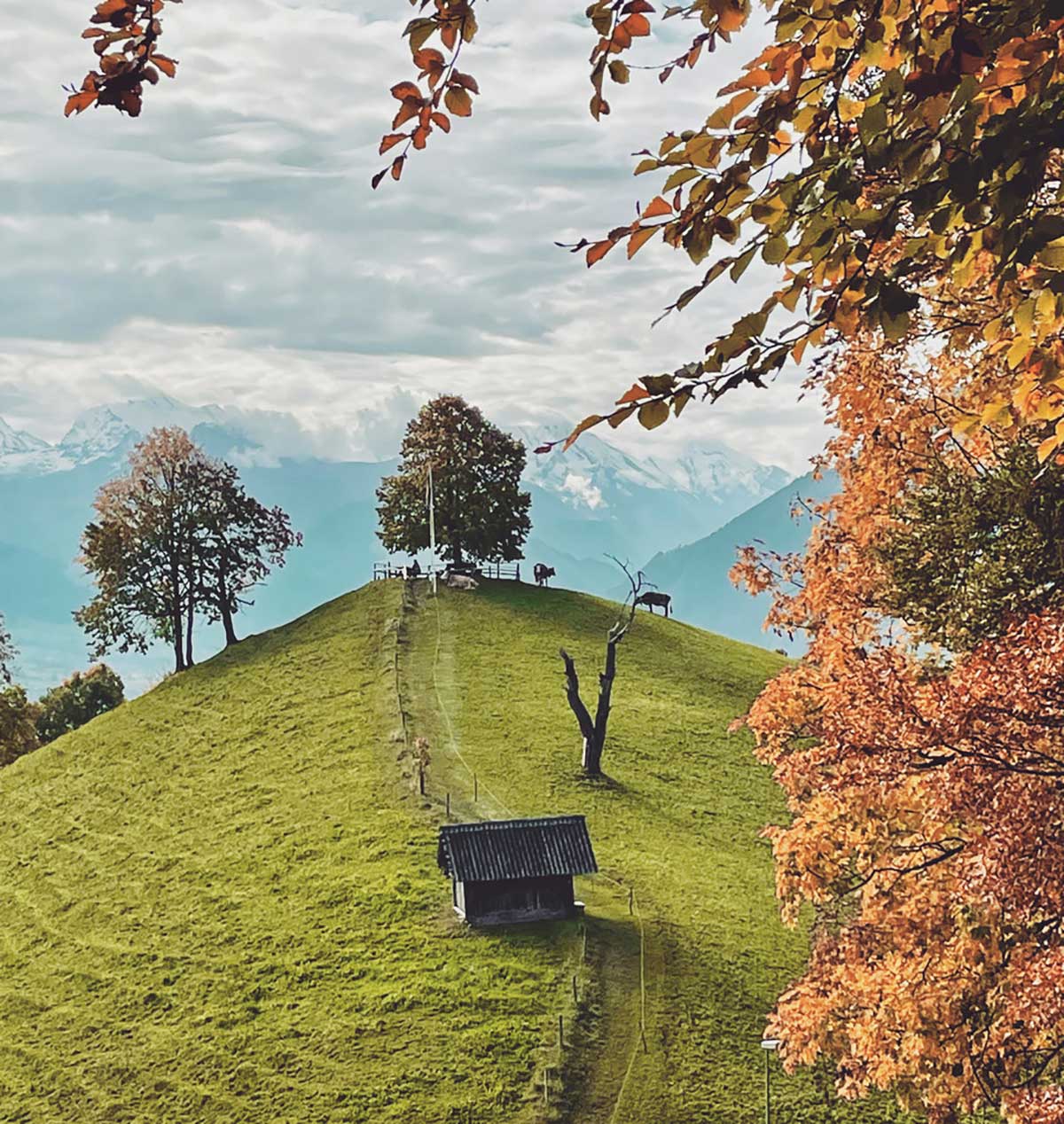
But the similarities of many other places to the original geographic locations and features that inspired them are a lot less apparent – and often somewhat far-fetched. The area of countryside in Jaun (Fribourg) named Bresilie/Le Brésil, for example, once lay fallow due to the dryness of the soil. And that – i.e. uncultivated – is how people in centuries past imagined the South American country of Brazil to be, hence the name.
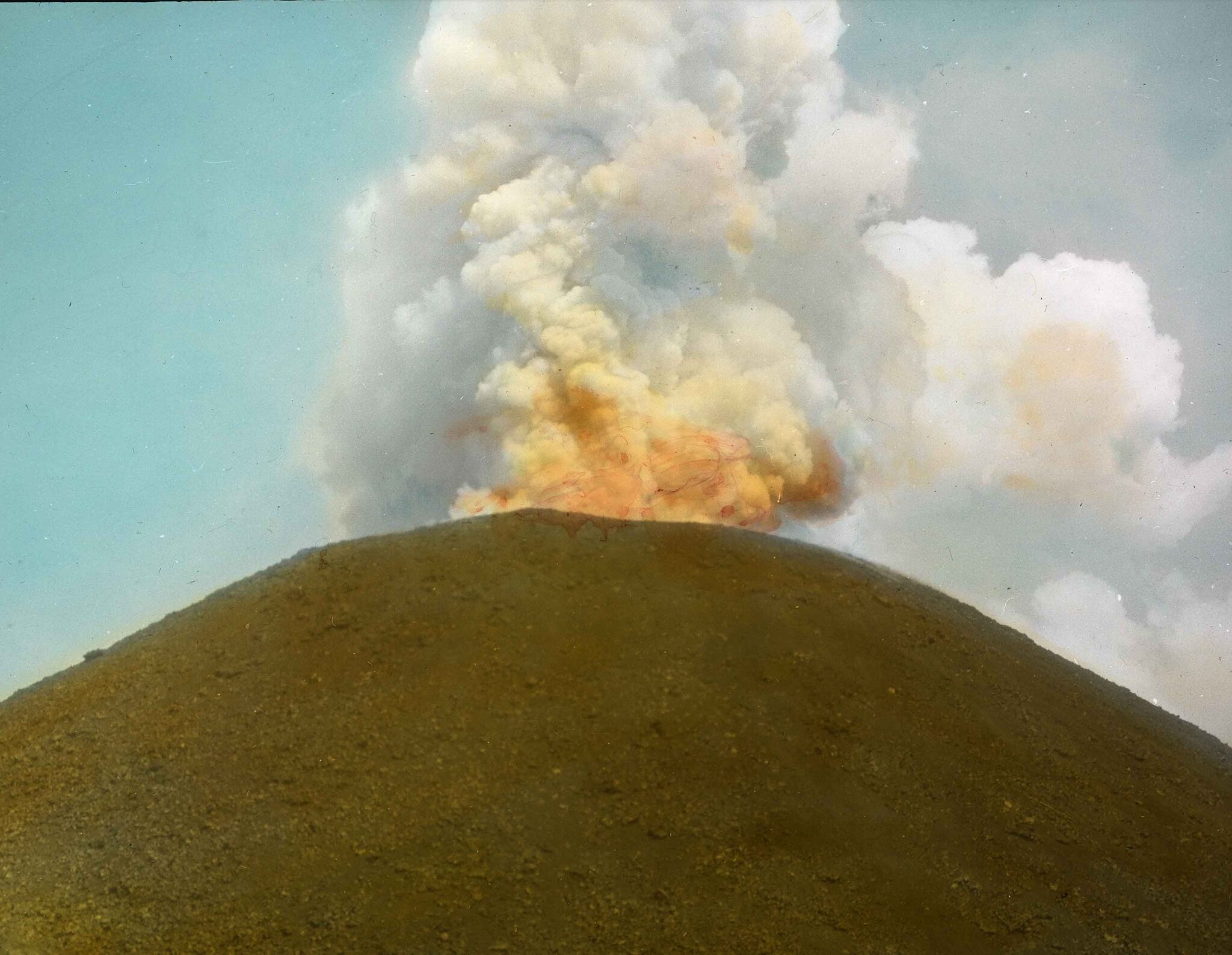
By a similar logic, several areas that were either inaccessible or unsuitable for agricultural use were given the name Afrika. This particular toponym can be found in Buchs (St Gallen) and in Büren (Solothurn), for example.
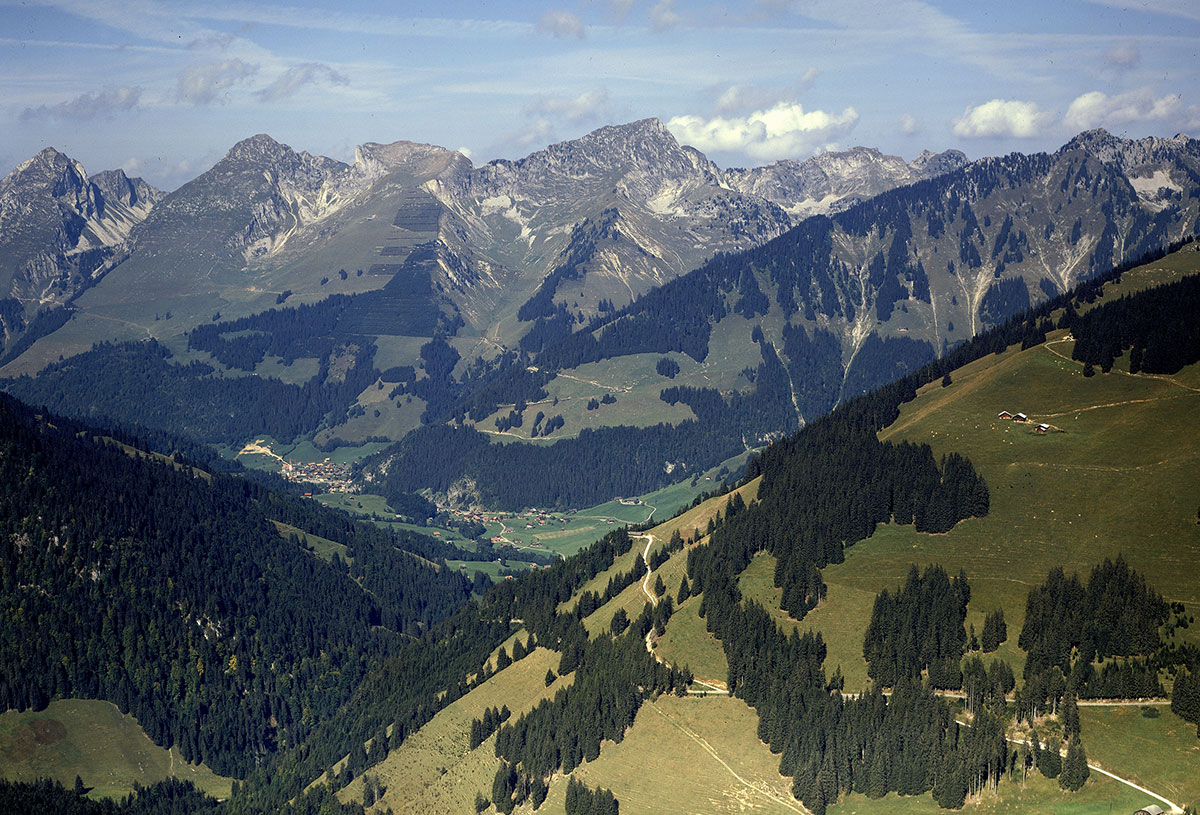
Humorous names
In quite a few cases, these ‘exotic’ borrowed names were probably coined with tongue in cheek. How else to explain Himalaia for a modest, tree-lined slope in Salenstein in the canton of Thurgau? A number of places that were particularly cold and shady, and where snow tended to lie for longer than in the surrounding area, such as in Rothrist (Aargau), Kappelen (Bern) or above Elm (Glarus), were named Sibiri(e) after Siberia, the inhospitable Russian region known for its long harsh winters.
And two houses called Petersburg were also named in jest. The first, in Fischingen in the canton of Thurgau, was built by a man whose surname was Peter. Because of its size, it was mockingly referred to as Petersburg (‘burg’ meaning castle) – as well as being an allusion to the fashionable capital of the Russian Empire. The man who built the other Petersburg, in Ramsen in the canton of Schaffhausen in 1822, was one Peter Neidhart – so, once again the owner’s name was the main influence. Taking their cue from ‘Petersburg’, houses later built in Ramsen would go on to be called Moskau (Moscow) and Warschau (Warsaw).
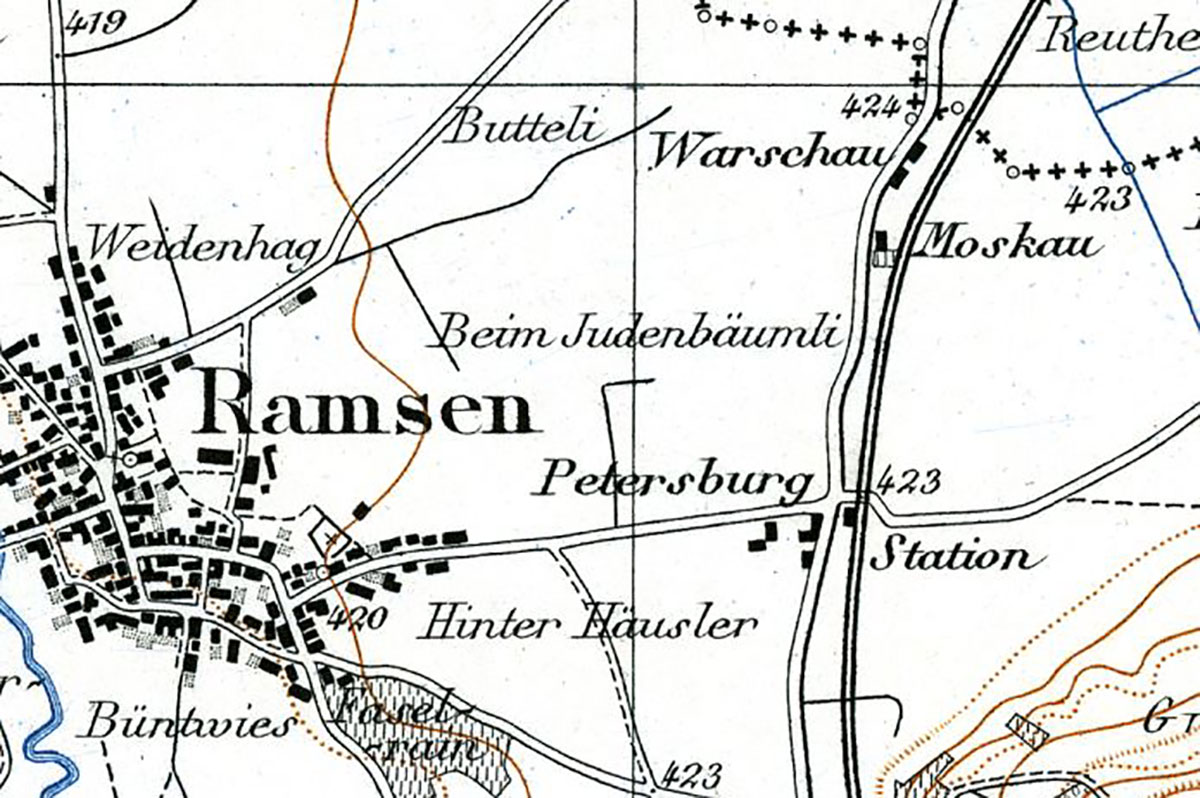
Far, far away
Many toponyms were used to convey the remoteness of the area in question. The majority of the more than 20 Amerikas in German-speaking Switzerland, as well as the two Kanadas, in Gams (St Gallen) und Welschenrohr-Gänsbrunnen (Solothurn), are situated at a considerable distance from the nearest towns and villages. These names originated at the time of the conquest and settlement of the Americas by Europeans.
From the 18th century, when growing numbers of Swiss began emigrating to North and South America (numbering several hundred thousand between 1850 and 1930), the name Amerika took on many different connotations here at home – two of which were doubtless ‘far, far away’ and (erroneously) ‘unsettled area in the West’. Thus Amerika and Kanada came to be used as names for remote geographic locations in the German-speaking part of the country.
Emigrants…
And the act of emigration itself is reflected in some place names. The Amerikanerblätz in Hägendorf was so named because this once forested area had been clear-felled and the proceeds raised from the sale of the timber used to pay off the community’s debts. The village in the canton of Solothurn had fallen into debt in 1854 after paying for the passage to America of 128 of its poorer citizens. An expensive undertaking, but one that was almost certainly worth the authorities’ while given that those who emigrated were no longer a burden on the village’s poor-relief fund.
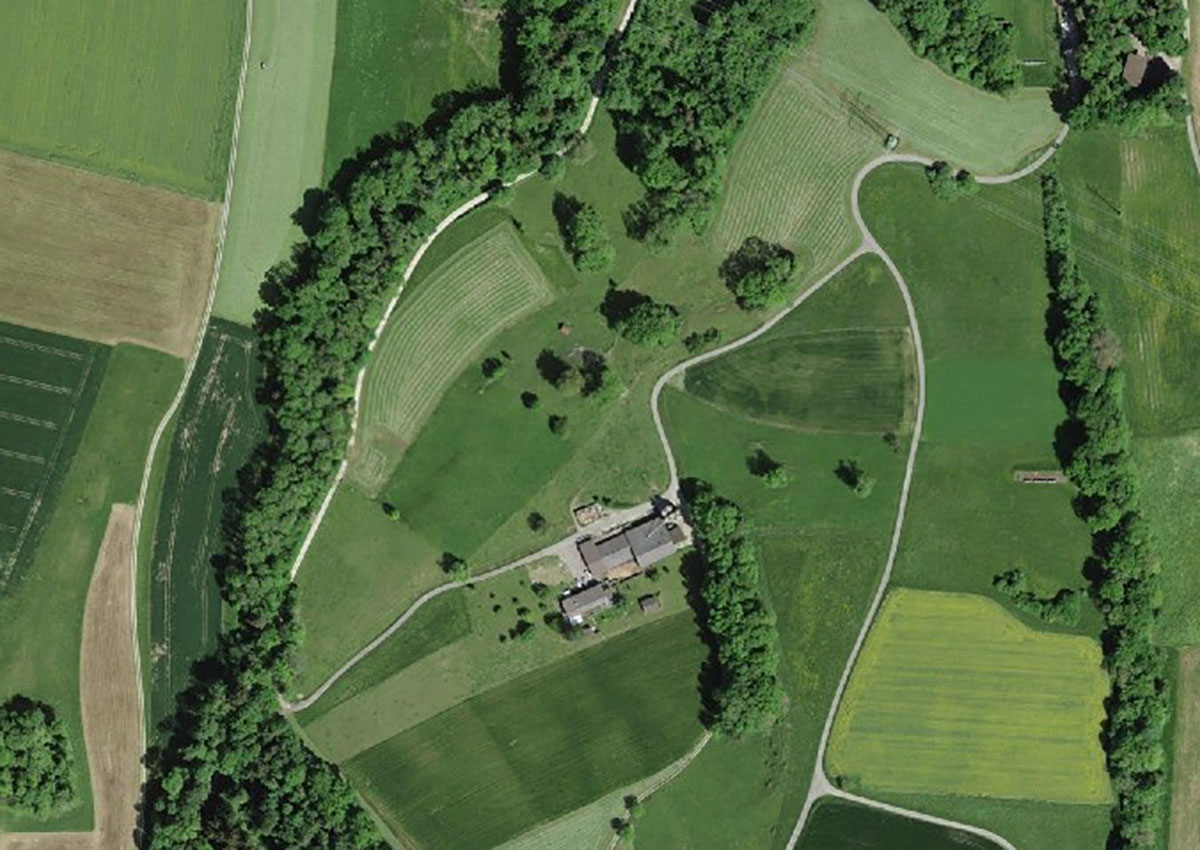
The name Amerika-Egge in Uetendorf tells a similar story: the community in the canton of Bern sold this area to finance the emigration of paupers. And Argentinie in Niederweningen (Zurich) is another location that may have been named after the communal sale of wood to raise funds for emigration – in this case to South America.
…and homecomers
Not everyone who went abroad remained in their new homeland. Many returned. One of these was a farmer by the name of Kämpfer, who took up residence in Wintersingen (Basel-Landschaft). According to the stories, Kämpfer was often to be seen sitting on a bench near his farm that afforded views far and wide, causing him to exclaim that he was “now back in America”. And so the name Amerika stuck to the location where the bench stood.
A wild, scrubby water meadow on the Aare river between Heimberg and Steffisburg in the canton of Bern reminded yet another returnee of California, where he had once lived. The area, which has now been built over, was thus dubbed Kaliforni in the local dialect.
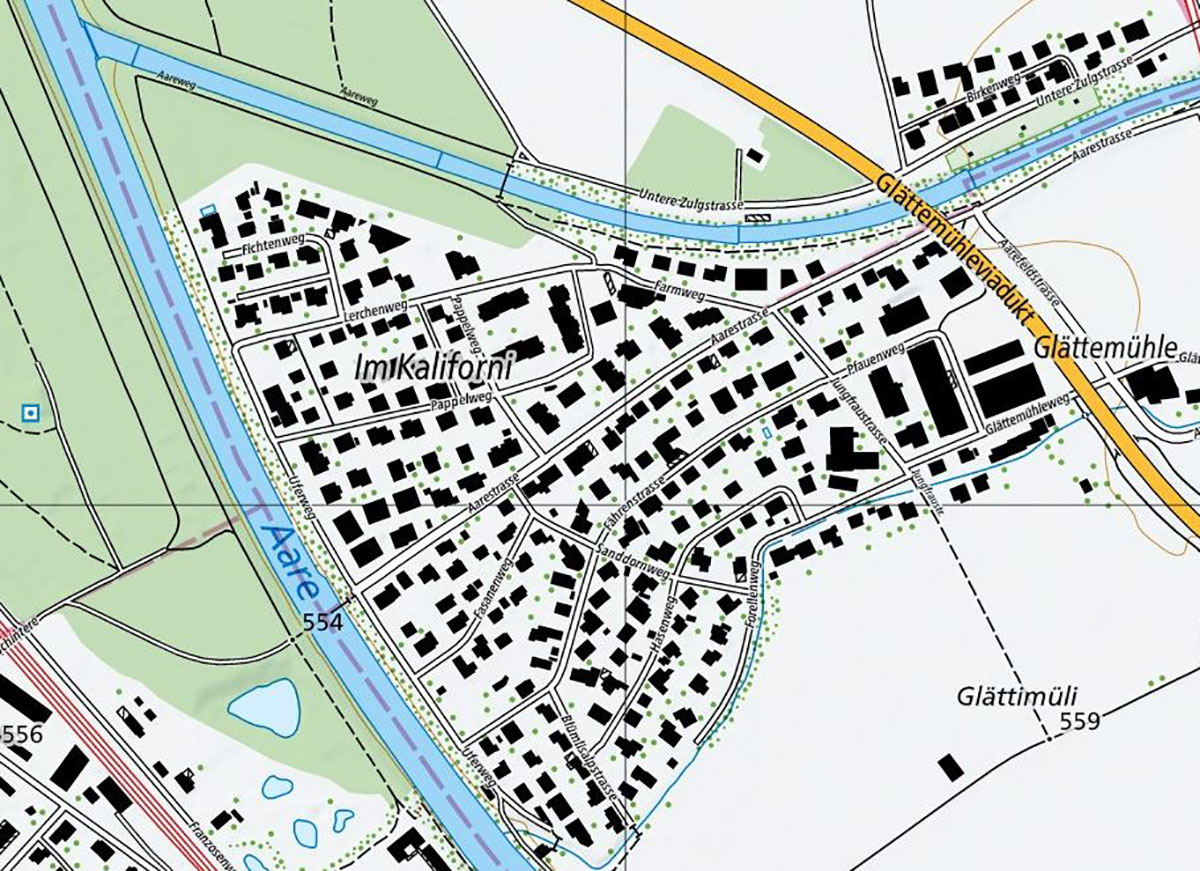
Swiss women and especially Swiss men were also involved in the former colonies – with some like the Faesch family from Basel owning plantations. The parents gifted a plantation in Dutch-occupied Suriname in South America to their daughter Margaretha Viktoria and her husband Johann Rudolf Ryhiner as a wedding present. Inspired by this, the couple christened the manor house they built in Kleinbasel in 1797 Klein-Surinam or ‘Little Suriname’. There is still a street in the neighbourhood called Im Surinam.
Foreign armies
Many emigrants were fleeing from poverty and hunger, while others hoped to enjoy better career opportunities abroad. Thankfully, Swiss emigration in the 18th, 19th and early 20th centuries was not driven by war. But Switzerland was not entirely free of armed conflict. And this too is reflected in the occasional toponym.
There are no less than three Schwedeschanze: in Breitenbach (Solothurn), Beggingen (Schaffhausen) and Pfeffingen (Basel-Landschaft) – sites at which people supposedly hid from the Swedish troops fighting in northern Switzerland during the Thirty Years’ War (1618-1648). Or, perhaps, sites at which the Swedes themselves sought refuge – it is no longer entirely clear.
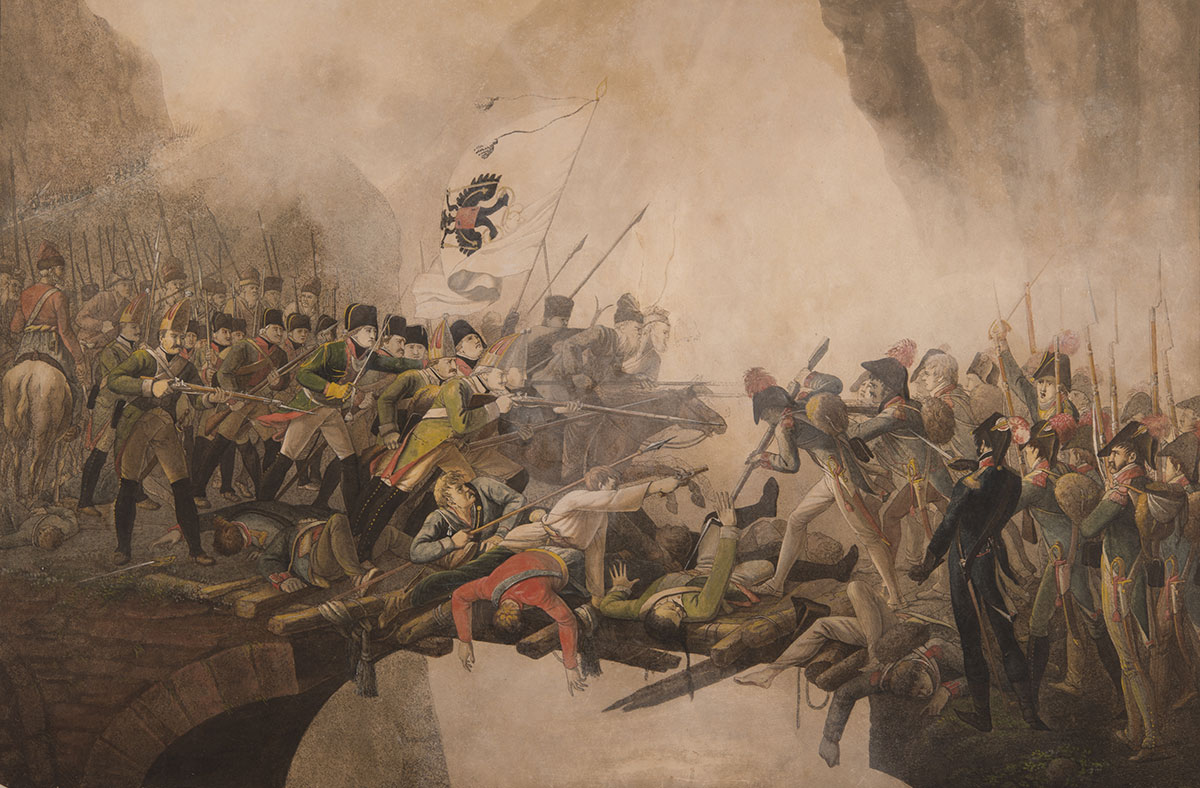
There are also two Russeschanze, one in Obersiggenthal (Aargau) and another in Ramsen (Schaffhausen), where the Russians are said to have hidden out during the Coalition Wars (1792-1815). And we mustn’t forget the two Franzoseschanze, in Muotathal (Schwyz) and Unterengstringen (Zurich), which are also reputed to have their origins in the Coalition Wars. However, it is not possible to prove that the troops in question were actually present at every one of these places.
World history reflected in Switzerland
Wars continued to influence names in the Swiss landscape long after they stopped taking place on Swiss soil – for the most part circumstantially and in some cases accidentally. There is a Mandschurei in Busswil near Büren (Bern). This forest clearing supposedly acquired its name because it was created at the time of the Russo-Japanese War (1904-1905), in which the rival powers were fighting over the region of Manchuria (now in present-day China and Russia).
A similar story unfolded some 50 years later in the same community. This time, it was the Algerian War that was taking place (1954-1962), and so the cleared plot of land was unceremoniously named after the Algerian capital Algier(s).
The Holy Land
Some of the oldest ‘exotic’ borrowed names are those taken from the Bible – first and foremost, Bethlehem. More than a dozen places, landscape features and houses bear the name, and some have done so since the Middle Ages. But the reasons for this vary. The oldest wooden building in Schwyz, for example, was named Bethlehem because its humble appearance was reminiscent of the stable in which Jesus had been born. A similar way of thinking most likely led to the naming of Bethlehem farm in Waldkirch (St Gallen). And the similarity between the words Bethlehem and ‘Bettelheim’ (meaning ‘home for beggars’) probably also played a role.
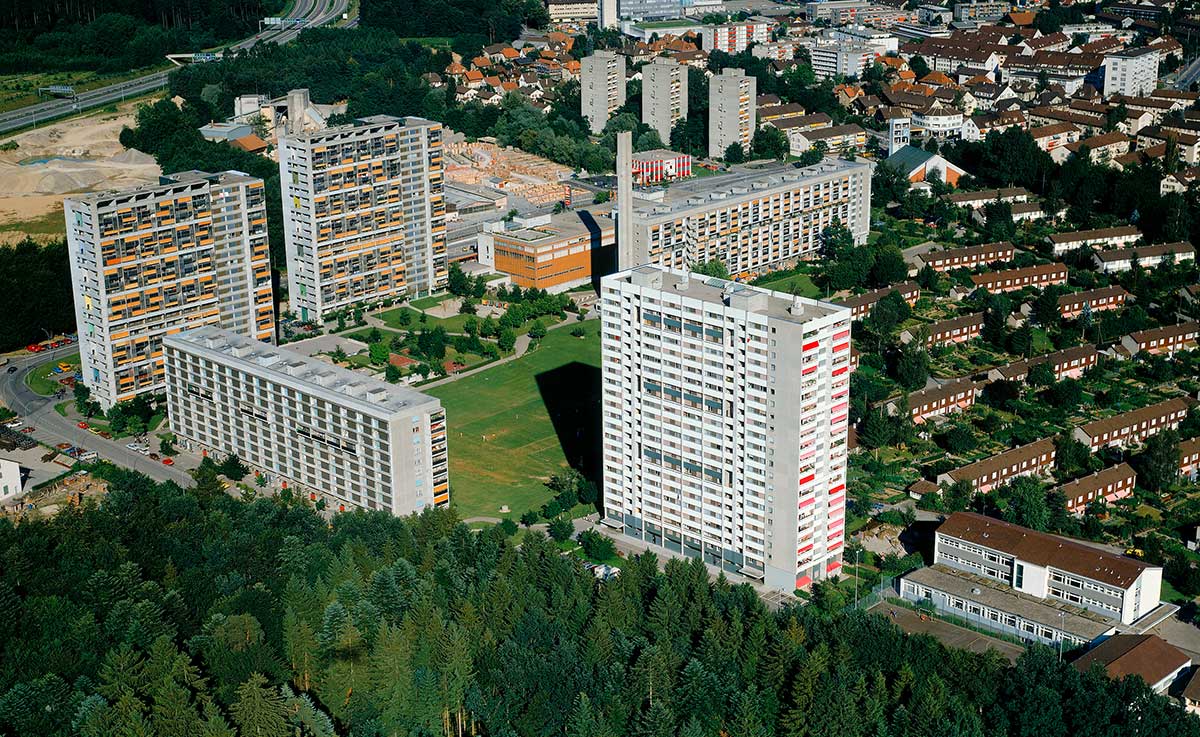
The hamlet of Bethlehem in Homburg (Thurgau) no doubt acquired its name as an act of wish fulfilment, given that its first inhabitants were mainly pious Free Church members who had moved there from Bern. It is not clear how the district of Bethlehem in the city of Bern came by its name. If not for either of the reasons outlined above, then possibly because the neighbourhood was originally a stop along a pilgrimage route connected with the birthplace of Jesus.
There are also two farms in the canton of Lucerne named Libanon. Both are situated on the side of a hill and were almost certainly named ironically after the Mount Lebanon range in the Middle East, which would have been familiar to Bible readers at the time. And there are a number of brooks with the jokey Biblical name of Jordan in the German-speaking part of the country – the Jordan in Berlingen (Thurgau) is even situated right next to the Öölbärg, the Mount of Olives.
The eternal Saracens
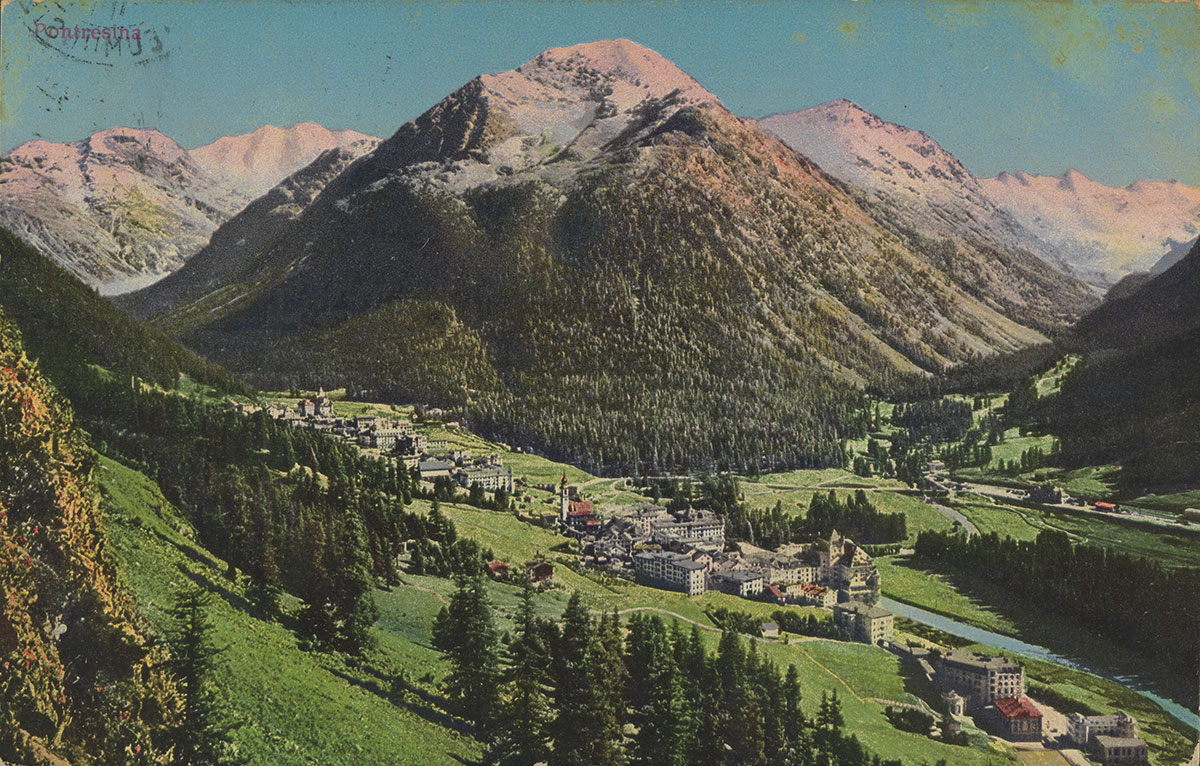
One of the oldest ‘exotic’ borrowed toponyms still in existence in Switzerland is almost certainly Pontresina – which can be traced back to the Latin ‘ponte saraceno’, meaning ‘bridge of Saracenus’. ‘Saracenus’ refers to ‘the Saracens’ – in the Middle Ages, this was the customary term used in Europe to describe ‘Muslims’. Nevertheless, the man who founded Pontresina was in all likelihood not a Muslim and certainly not a Saracen, but may have acquired his name because of his somewhat darker skin or (alleged) Middle Eastern ancestry.
It’s true that Muslim warriors repeatedly looted and pillaged their way through Graubünden and Valais during several decades of the 10th century, almost reaching St Gallen. But there is no archaeological evidence as yet that the Saracens ever put down roots on what is now Swiss territory or founded settlements here – despite the adventurous attempts of some history buffs to prove otherwise by referring to the origins of place names.
The ‘Saracen’ component in names like Bisse des Sarrasins in Anniviers (Valais) may imply great age (the idea that the irrigation channel is old enough to have been built by the Saracens) or, as in the case of Le Sarrasin in Ponthaux (Fribourg), hint at the cultivation of buckwheat (known in French as ‘(blé) sarrasin’), a grain brought to Europe by the Muslim Tatars. It’s a similar story with the many Türkeien in Central and Eastern Switzerland. In the eastern part of German-speaking Switzerland, corn was known in the local dialect as ‘Türgg(e)’ well into the 20th century, as the maize from Central America was thought to have originated in Turkey (hence the Italian phrase ‘granoturco’).
Reflecting our perceptions of the world
At the end of the day, we can say that the countless hundreds of ‘exotic’ toponyms in Switzerland were coined over many centuries and for very different reasons. What they all have in common is that they stand testament to how various international events and occurrences were perceived and contemplated locally, and that they provide a fascinating reflection of how people imagined the world during a particular historical era.
About the author: André Perler
André Perler is a dialectologist and historian and works at SRF as a dialect editor.

In compliance with the JTI standards
More: SWI swissinfo.ch certified by the Journalism Trust Initiative




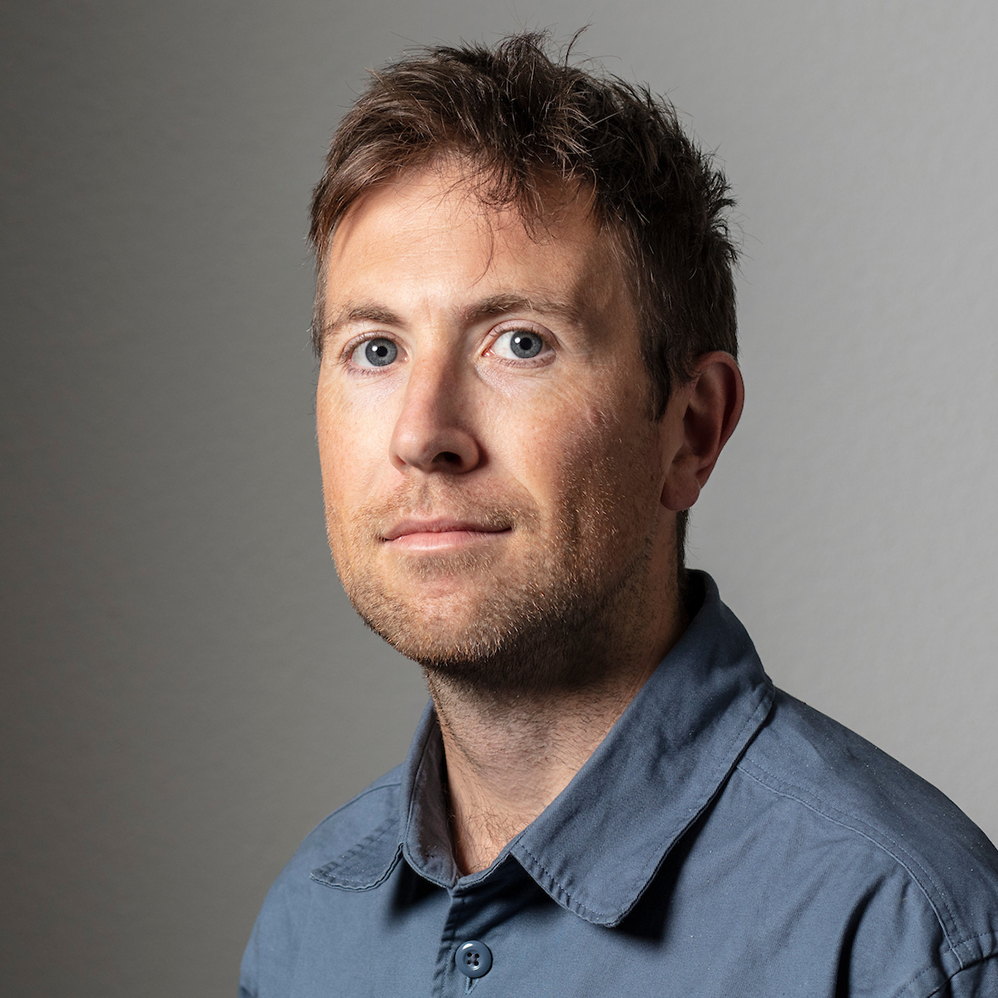


You can find an overview of ongoing debates with our journalists here . Please join us!
If you want to start a conversation about a topic raised in this article or want to report factual errors, email us at english@swissinfo.ch.